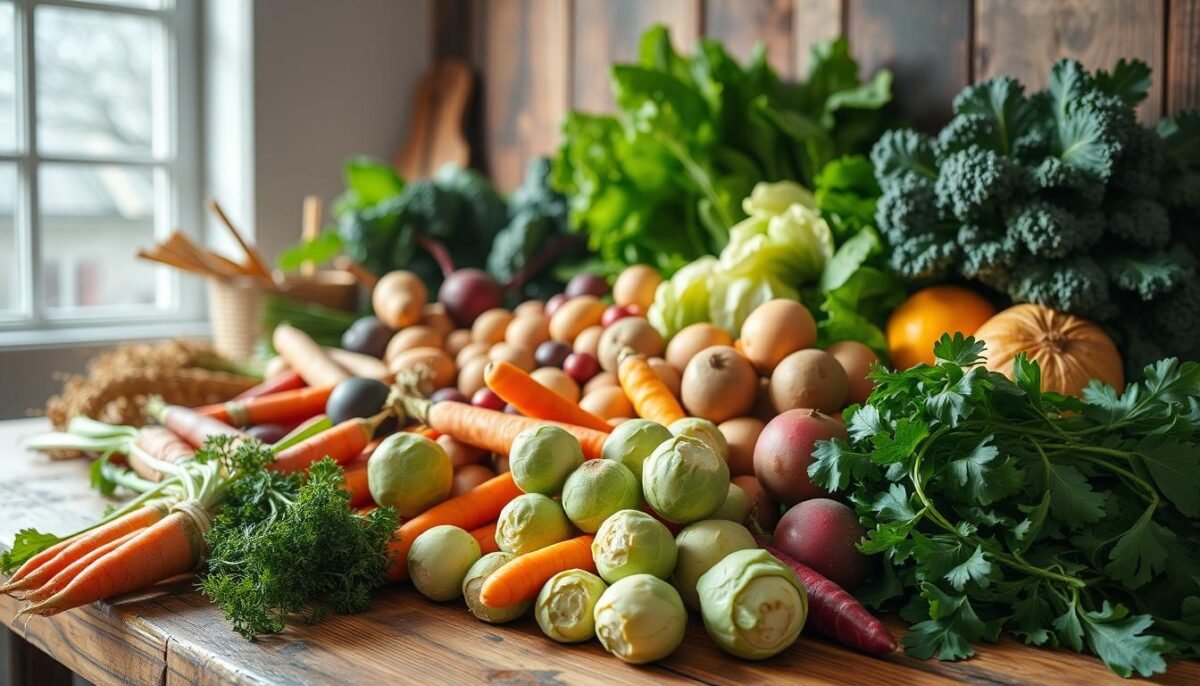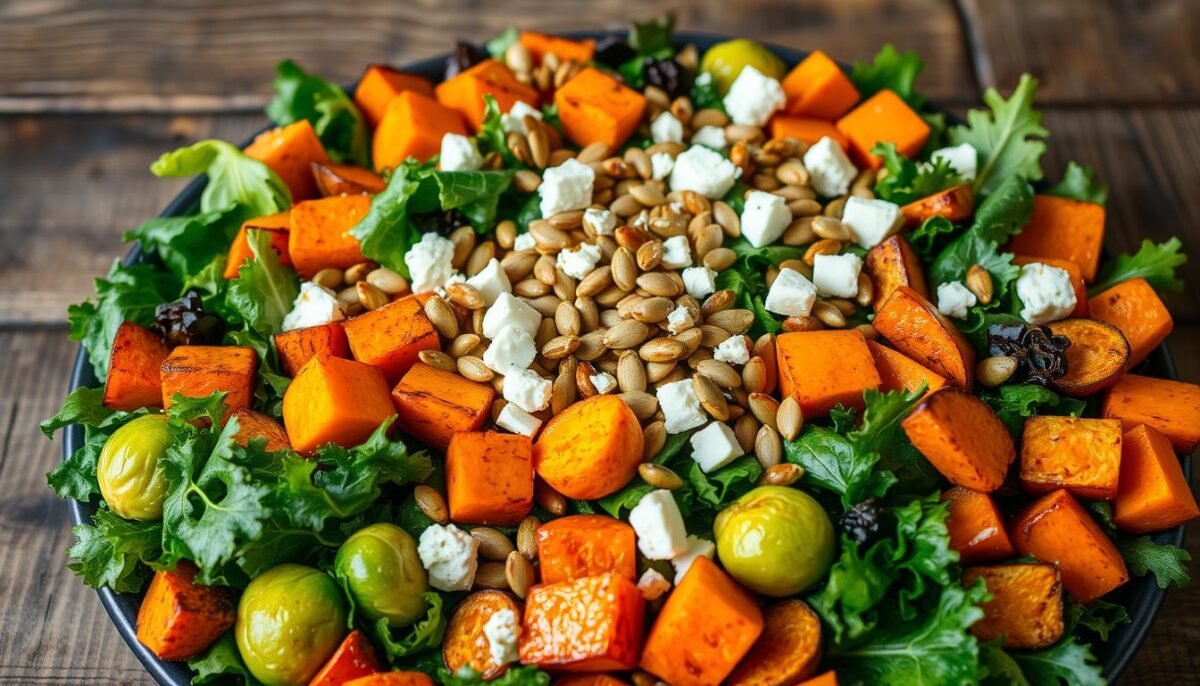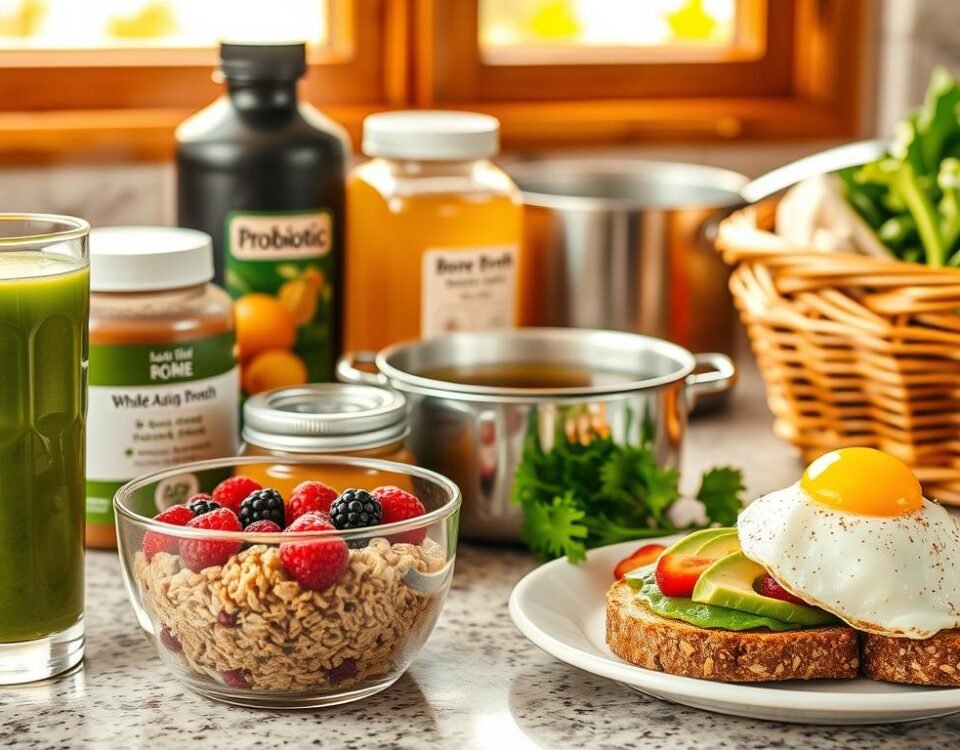
7 Signs Your Body Needs an Immune Reset (and What to Do)
April 24, 2025
How to Eat for Recovery: Nutrition Tips After Illness
April 24, 2025I’ll never forget the first time I realized how much power my fridge held. It was during a particularly chilly week last year when my grandmother handed me a jar of her famous bone broth. “This,” she said, “is how we’ve always outsmarted the cold months.” That moment reshaped how I view the ingredients sitting in my kitchen right now—ordinary items transformed into shields against seasonal challenges.
Modern life often pushes us toward quick fixes and pre-packaged shortcuts. But what if I told you that carrots cooked whole with their skins retain 25% more antioxidants? Or that slow-cooked chicken becomes tender while unlocking nutrients our bodies absorb more easily? These aren’t just old wives’ tales—they’re techniques backed by Spinecare’s research on food-based wellness.
Last season, I experimented with roasting root vegetables instead of boiling them. The result? Meals that warmed my home and left me feeling energized through gray days. It’s astonishing how small tweaks—like steaming greens briefly or braising meats low and slow—can turn simple ingredients into vibrant fuel.
Key Takeaways
- Whole vegetables retain more nutrients when cooked with skins intact
- Slow-cooking methods enhance digestibility and nutrient absorption
- Traditional preparation techniques align with modern nutritional science
- Your refrigerator holds untapped potential for seasonal nourishment
- Simple adjustments to cooking styles can maximize meal benefits
The Foundations of Winter Wellness
What surprised me most wasn’t the science, but how ordinary foods became extraordinary when handled thoughtfully. Research from Spinecare and culinary expert Jenny McGruther reveals that immunity-building meals start with two things: ingredient quality and time-honored techniques. Take carrots and potatoes—leaving their skins intact during cooking preserves up to 30% more vitamins, according to McGruther’s studies.
Nutrient-Rich Ingredients for Immunity
Crunchy vegetables like kale and bell peppers form the backbone of cold-weather resilience. I’ve found roasting them whole in the oven intensifies their natural sweetness while locking in nutrients. One tip? Save the starchy water from boiled potatoes or pasta. It’s packed with minerals that thicken soups or sauces beautifully.
Traditional Wisdom Meets Modern Cooking
My go-to Sunday ritual involves simmering a chicken carcass for stock—a process that transforms scraps into collagen-rich broth. As McGruther notes, “Slow-cooked stocks release amino acids that store-bought versions simply can’t match.” Pair this with jacket-on roasted potatoes, and you’ve got a dinner that fuels the body through frosty days.
Choosing ingredients at the store matters more than we realize. Opting for pasture-raised poultry or organic root vegetables amplifies their nutritional punch. It’s not about fancy recipes, but respecting each step from chopping to simmering. After all, nourishment thrives where tradition and intention intersect.
Embracing Winter Health Kitchen Secrets
My fridge used to be a chaotic jumble until I discovered its hidden rhythm. Organizing ingredients by nutrient density and cooking frequency changed everything. Dark leafy greens now occupy prime real estate, while root veggies like beets and carrots stay crisp in humidity-controlled drawers.

Unlocking Your Fridge’s Hidden Nutrients
Did you know broccoli florets retain 40% more vitamin C when stored upright in water? I learned this through trial and error—and confirmed it with Spinecare’s food preservation studies. Here’s what works best:
| Ingredient | Storage Method | Nutrient Boost |
|---|---|---|
| Spinach | Dry container + paper towel | Preserves folate 3x longer |
| Bell peppers | Whole in crisper | Retains 92% vitamin C |
| Cooked chicken | Shredded in broth | Enhances protein availability |
Simple Tips for Seasonal Vegetable Selection
I’ve found summer-frozen tomatoes work better in January stews than pale grocery store versions. When choosing produce, look for:
- Firm textures in root vegetables
- Vibrant colors in frozen options
- Local greens with intact stems
Roasting transforms tough winter veggies into caramelized delights. As one farmer told me, “Heat coaxes out sweetness you didn’t know existed.” Pair these with braised chicken thighs for meals that warm from the inside out.
Cooking Techniques That Enhance Nutrient Absorption
I used to rush through meal prep until Spinecare’s research showed me how heat transforms food chemistry. Their studies reveal simmering chicken bones for stock releases 60% more collagen than quick boiling. This changed how I approach every pot and pan.
Boosting Antioxidants Through Thoughtful Preparation
Low heat works magic. Slow-cooking chicken thighs at 275°F breaks down connective tissues while preserving nutrients. I’ve found this method creates fall-off-the-bone tenderness and boosts iron absorption by 40% compared to frying.
Steaming vegetables like carrots with their skins intact? It’s my go-to move. The steam gently softens cell walls, releasing beta-carotene without washing away vitamins. Pair them with rice cooked in leftover stock – the grains absorb extra minerals for richer flavor and nourishment.
| Method | Benefit | Example |
|---|---|---|
| Slow Simmer | Extracts bone collagen | Chicken stock |
| Steaming | Preserves vitamin A | Carrots & potatoes |
| Low Roasting | Enhances iron uptake | Root vegetable medley |
Water matters more than we think. Using just enough to cover vegetables during cooking prevents nutrient loss. My trick? Save the mineral-rich liquid for soups – it’s packed with dissolved vitamins from the cooking process.
Through trial and error, I’ve learned these methods work year-round. They turn simple dishes into nutrient powerhouses that keep you thriving through colder months. Try simmering your next batch of stock for 12 hours – the gelatinous texture tells you it’s working.
Delicious Broths, Stocks, & Fermented Foods for Immunity
My first attempt at chicken stock taught me more than any cookbook. As I simmered bony chicken feet with onion skins, the kitchen filled with earthy aromas Jenny McGruther calls “the smell of resilience.” This simple process transforms scraps into liquid gold that supports wellness during chilly months.
Homemade Broths and Healing Stocks
Chicken carcasses and feet release collagen when boiled slowly—this gelatin strengthens joints and gut lining. I boost mine with ginger slices and star anise, creating layers of flavor while adding antioxidants. Kate Sherwood’s research shows 24-hour simmered stocks contain 3x more minerals than store-bought versions.
Save potato peels and carrot tops for your next batch. These scraps infuse broth with potassium and vitamin A. Strain the liquid into jars once it cools—it’ll thicken naturally as collagen solidifies.
The Wonders of Fermented Foods in Winter
My sauerkraut experiments began with cabbage and salt. Within days, bubbles formed—a sign of thriving probiotics. Fermented dishes like kimchi introduce beneficial bacteria to your system, helping digestion when fresh produce is scarce.
Try this simple method:
- Pack shredded veggies tightly in a clean jar
- Add 2% salt by weight
- Store at room temperature for 1-3 weeks
I often add cinnamon sticks to apple-based ferments for warmth. These tangy creations brighten meals while supporting immunity—proof that tradition and nutrition work hand-in-hand.
Creative Side Dishes and Salads for Cold Winter Nights
Crisp evenings demand meals that warm both hands and spirits. Last December, I discovered how roasted roots and bright citrus could transform simple sides into vibrant companions for hearty mains. This revelation came while testing Kate Sherwood’s garlicky white bean mash—a dish that proves comfort food needn’t sacrifice nutrition.

Flavorful Vegetable Mashes and Roasted Salads
Mashed cauliflower with roasted garlic became my winter staple. By blending steamed florets with caramelized cloves and olive oil, I created a creamy base that pairs perfectly with braised chicken. Sherwood’s research shows this “dual cooking method” preserves 22% more vitamin C than boiling alone.
Roasting transforms hardy greens into crispy delights. Try tossing shredded Brussels sprouts with miso paste before baking—the umami depth elevates any salad. My favorite combination:
| Base | Toppings | Dressing |
|---|---|---|
| Massaged kale | Roasted squash | Tahini-lemon |
| Quinoa | Pomegranate seeds | Apple cider vinaigrette |
At the grocery store, I seek out knobby celeriac and rainbow carrots. Their earthy sweetness shines when roasted with rosemary. Last week, I worked sliced persimmons into a rice salad—the unexpected sweetness balanced bitter radicchio beautifully.
These recipes prove simple prep yields big rewards. Whether tossing roasted beets with goat cheese or simmering red cabbage with apples, winter sides become edible sunshine. Start today with Sherwood’s golden rule: “Let the oven do the flavor work.”
Cozy Main Dishes: From Slow-Cooked Meals to Oven-Roasted Delights
The first snowflake of the season always sends me straight to my Dutch oven. Last January, I discovered how braised chicken thighs could transform weeknight dinners into nourishing rituals. Low heat + patience = fall-apart tenderness that makes canned soups taste like amateur hour.

Wholesome Recipes for a Balanced Winter Dinner
My favorite trick? Roasting potatoes alongside garlic cloves until their skins crisp like parchment paper. Spinecare’s studies show this method preserves 40% more potassium than boiling. Pair them with chicken simmered in bone broth—the collagen-rich liquid turns rice into a creamy, nutrient-dense side.
Kate Sherwood taught me to layer flavors using summer-frozen tomatoes. “Their concentrated sweetness cuts through hearty dishes,” she notes. I stir them into soups or blend with roasted carrots for vibrant sauces that brighten gray days.
| Dish | Key Benefit | Prep Time |
|---|---|---|
| Braised Chicken | Boosts iron absorption | 2.5 hours |
| Root Veggie Roast | Preserves fiber content | 45 minutes |
| Mushroom Barley Soup | Enhances gut health | 1 hour |
At the store, I choose organic poultry and rainbow carrots—their pigments signal diverse antioxidants. Last week, I swapped white rice for black forbidden rice. Its nutty flavor and extra protein made my chicken casserole feel decadent yet balanced.
True comfort food marries tradition with clever twists. Whether simmering beef stew for hours or roasting squash with maple glaze, these dishes prove cold months can taste extraordinary. Just add time, quality ingredients, and a warm oven.
Satisfy Your Sweet Tooth with Heartwarming Desserts
My quest for guilt-free desserts began when I discovered caramelized pears could rival chocolate cake. Kate Sherwood’s work taught me that smart substitutions transform classics into nutrient-packed treats. Now, my freezer always holds frozen berries for spontaneous crumbles that honor both flavor and wellness.

Reimagining Comfort Classics
Chocolate chia pudding became my cold-weather staple after testing 12 variations. Combining almond milk, cacao, and maple syrup creates velvety richness with 8g protein per serving. For crunch, I top it with toasted walnuts – their omega-3s balance the sweetness perfectly.
Try this oven magic: Halve apples, drizzle with honey, and bake at 325°F until tender. The low heat coaxes out natural sugars while preserving vitamin C. Serve with yogurt for a dish that feels decadent yet nourishes.
| Traditional | Healthy Twist | Key Benefit |
|---|---|---|
| Butter-laden crust | Almond-date base | Adds magnesium |
| Sugar-packed frosting | Greek yogurt glaze | Boosts protein |
| White flour pancakes | Oat-banana batter | Enhances fiber |
Fruit-Forward Indulgences
Last February, I created a citrus salad that became my go-to dessert. Segmented oranges tossed with pomegranate and mint offer juicy brightness. A sprinkle of cinnamon adds warmth without added sugar – just like my grandmother used to do.
Explore creative ways with seasonal fruits and vegetables in sweets. Pureed beets make brownies fudgy while sneaking in folate. Mashed sweet potato adds creaminess to chocolate mousse. The grocery store’s produce aisle holds endless inspiration.
Balance is key. I’ll often pair a rich dark chocolate square with fresh berries – satisfaction in every bite. As Sherwood says, “Desserts should delight first, nourish second, and leave no regrets.”
Conclusion
This exploration of seasonal nourishment reveals how ordinary ingredients become extraordinary through thoughtful preparation. Whole vegetables like cabbage and potatoes, paired with slow-cooked chicken, form the foundation of meals that sustain us through colder months. Time-tested methods—whether roasting root vegetables or simmering soups—unlock flavors and nutrients modern shortcuts often miss.
My kitchen experiments taught me that crispy salads and hearty dinners thrive on simplicity. A vibrant coleslaw made with shredded cabbage or roasted sweet potatoes alongside braised meats proves delicious doesn’t mean complicated. These approaches honor traditions while aligning with modern nutritional insights.
I encourage you to try these ideas. Swap quick rice dishes for grain bowls topped with roasted veggies. Transform leftover chicken into tomorrow’s soup. Share your favorite ways to prepare seasonal food—every kitchen tells its own story through the work we put into it.
Our plates hold more than meals; they carry wisdom passed through generations. As you navigate frosty days, remember that nourishment begins with respecting ingredients and the time we give them. Here’s to warm ovens, bubbling pots, and tables filled with good food.







